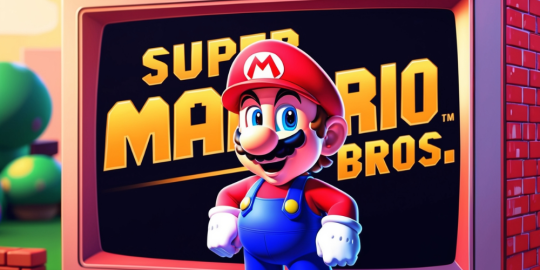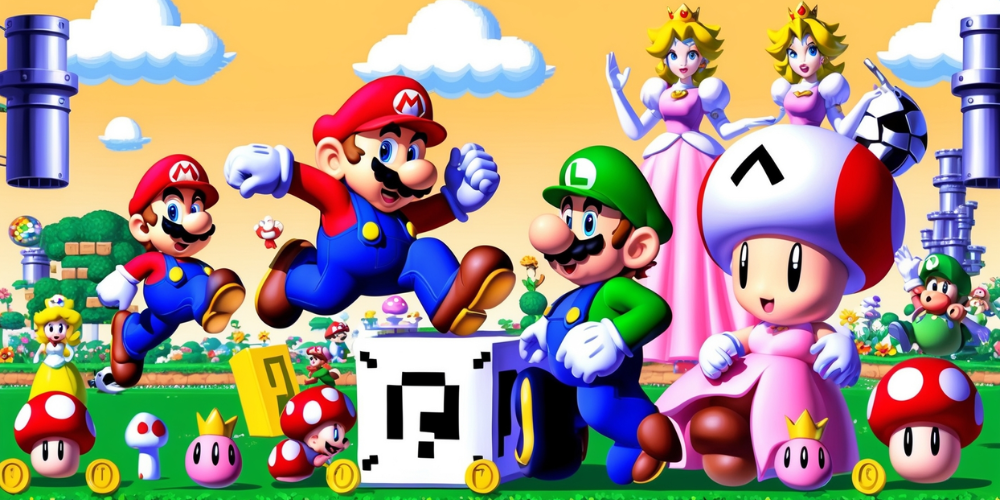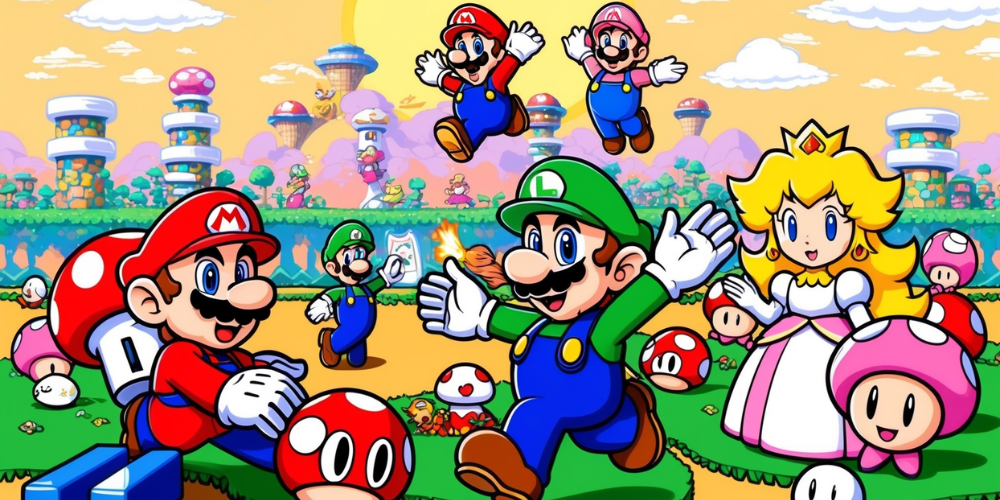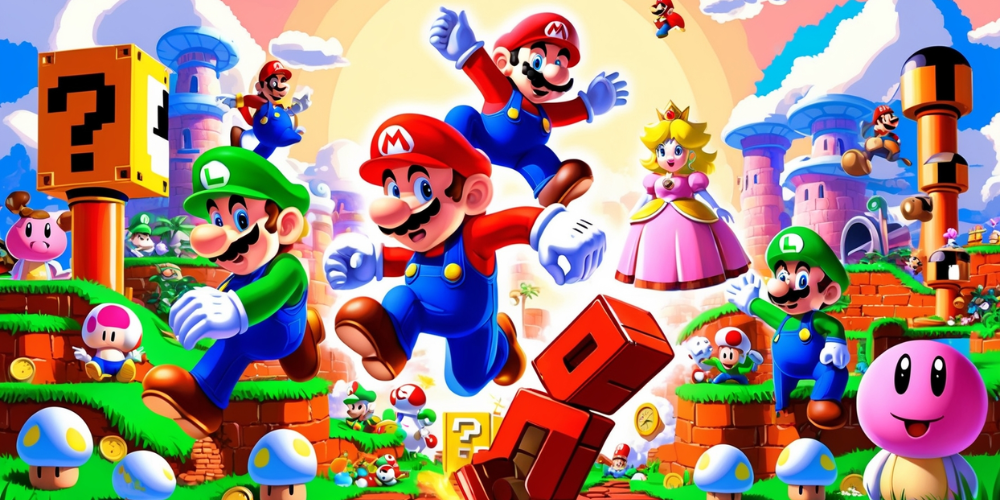
As a child, there was something magical about the world of video games. My first encounter with the vibrant landscapes and imaginative characters came when I stumbled upon Super Mario Bros. Little did I know, I was not just playing a game; I was witnessing the dawn of a new era in platform gaming. Mario became not just a character but a cultural icon, shaping the very foundation of this genre.
The Birth of a Legend
Super Mario Bros. graced our screens back in 1985, marking a significant shift in the gaming landscape. The 8-bit graphics, though modest by today's standards, were groundbreaking at the time. They introduced players to a captivating world where the boundaries of creativity were pushed to new heights. I remember the first time I jumped on a Goomba; it felt exhilarating. That simplistic yet addictive gameplay would keep me and countless others coming back for more.
Game Mechanics that Captivated Us
One aspect of Super Mario Bros. that drew me in was the intuitive gameplay mechanics. Jumping, running, and using power-ups were easy to grasp yet challenging to master. The introduction of power-ups, like the Super Mushroom and Fire Flower, added layers of strategy. I could transform from a small Mario to a Super Mario, able to take on more formidable foes. This design philosophy of accessibility, paired with depth, became a cornerstone of platform gaming.
Creating a Fandom
As I delved deeper into the game, it became clear that Mario was more than just a character; he generated a fandom. Merchandise like toys, clothing, and even lunch boxes flooded the market. Everywhere I looked, there was a reminder of Mario’s adventures. I remember friends gathering to compare high scores and sharing secrets about hidden levels and shortcuts. It became a shared experience that extended beyond the console.

Defining Character and Iconography
Mario himself, with his iconic red hat and mustache, became an enduring symbol of gaming. This character design was not just memorable; it was a statement. Mario was approachable and relatable. In a world filled with dark and brooding characters, Mario represents joy and optimism. I felt a connection with him as I navigated through difficult worlds, overcoming challenges together.
The Expansion of the Mario Universe
With the immense success of the original game came a slew of sequels and spin-offs. Each new installment introduced fresh gameplay mechanics, environments, and characters. Super Mario 64, which debuted in 1996, marked a significant turning point in the world of 3D gaming. I vividly remember exploring Princess Peach's castle and discovering the freedom of movement in a three-dimensional space. The evolution from 2D to 3D dramatically transformed platform gaming, paving the way for future titles.
Influencing Game Design Standards
The impact of Super Mario Bros. extended beyond its own franchise. Developers began to adopt its design principles: tight controls, engaging level design, and a balance between challenge and reward. As I played various platformers that followed, I noticed how these elements echoed Mario's influence. Every jump felt responsive, every power-up offered a new advantage, a standard that Mario had set for the industry.

The Role of Sound and Music
One cannot discuss Super Mario Bros. without mentioning its legendary soundtrack. Koji Kondo's compositions became an essential part of the experience. I can still hear the iconic theme playing in my head, a melody that captures the whimsy of the game. The music not only enhanced the gameplay but became synonymous with Mario's identity, demonstrating how sound reinforces visual storytelling.
Adapting with Technology
As technology advanced, so did Mario. The franchise embraced new platforms and innovations while retaining its core essence. Super Mario Galaxy introduced gravitational mechanics that transformed how we navigated spaces. Each new game leveraged cutting-edge technology, but the core gameplay remained accessible and engaging. I always found comfort in knowing that no matter how much the graphics improved, the feeling of adventure stayed intact.
Inclusion of Multiplayer Elements
The introduction of multiplayer gaming in the Mario series significantly shaped platform gaming. Titles like New Super Mario Bros. Wii allowed for cooperative play, fostering social interactions among friends and family. I cherished the moments of shared laughter and competitiveness as we raced against each other, working together to defeat Bowser. This layering of experiences enriched the gaming environment and set a precedent for platforms that followed.
The Cross-Generational Appeal
Mario's allure transcended age demographics. I played alongside friends and, later on, with younger family members who were just discovering the charm of Super Mario. The franchise has always succeeded in attracting new players while maintaining its existing fanbase. This quality ensured that Mario remained relevant even as gaming evolved with every generation. It was rewarding to witness the joy on a child’s face as they navigated the same worlds I had explored years ago.

Mario in Popular Culture
Mario's reach extended far beyond the game industry. The character found himself in movies, television shows, and even music. The sheer presence of Mario in popular culture solidified his status as an icon. I remember enjoying animated series and looking forward to each new game as if it were a cinematic release. Mario served as a gateway to broader cultural discussions about the role of technology and storytelling in our lives.
Super Mario as an Educational Tool
Beyond entertainment, I noticed that Mario games were utilized as educational tools in some contexts. The design encourages problem-solving and critical thinking, especially in the later levels where strategies are essential. I found personally that these games sharpened my reflexes and coordination, showcasing how a platformer could be both engaging and beneficial for cognitive development.
Reimagining Classic Titles
Nostalgia plays a vital role in the gaming experience, and the Mario franchise has adeptly reimagined classic titles. Titles such as Super Mario Maker enable gamers to design and share personalized levels, merging imagination with play. I enjoyed witnessing the inventiveness of the community, which breathed new life into familiar mechanics. It was fascinating to see how the essence of classic gameplay could be interpreted in innovative and unexpected ways.
The Future of Mario and Platform Gaming
The potential of Mario to continue evolving is boundless. As technology progresses, I anticipate even more immersive experiences that integrate virtual reality or augmented reality. The essence of what makes Mario special—a welcoming, adventurous spirit—will likely persist. Mario's continued evolution signifies the adaptability of the platform gaming genre.
Personal Reflections on Mario's Impact
Looking back, I realize how much Mario has shaped my gaming journey. It ignited my passion for video games, inspiring me to explore various genres while remaining grounded in the platforming roots that Mario established. The adventures through the Mushroom Kingdom are forever etched in my memory, and I carry the lessons learned from navigating those fantastical worlds. Mario has not just influenced the industry; he has enriched my life and the lives of countless others in ways that go beyond mere entertainment.